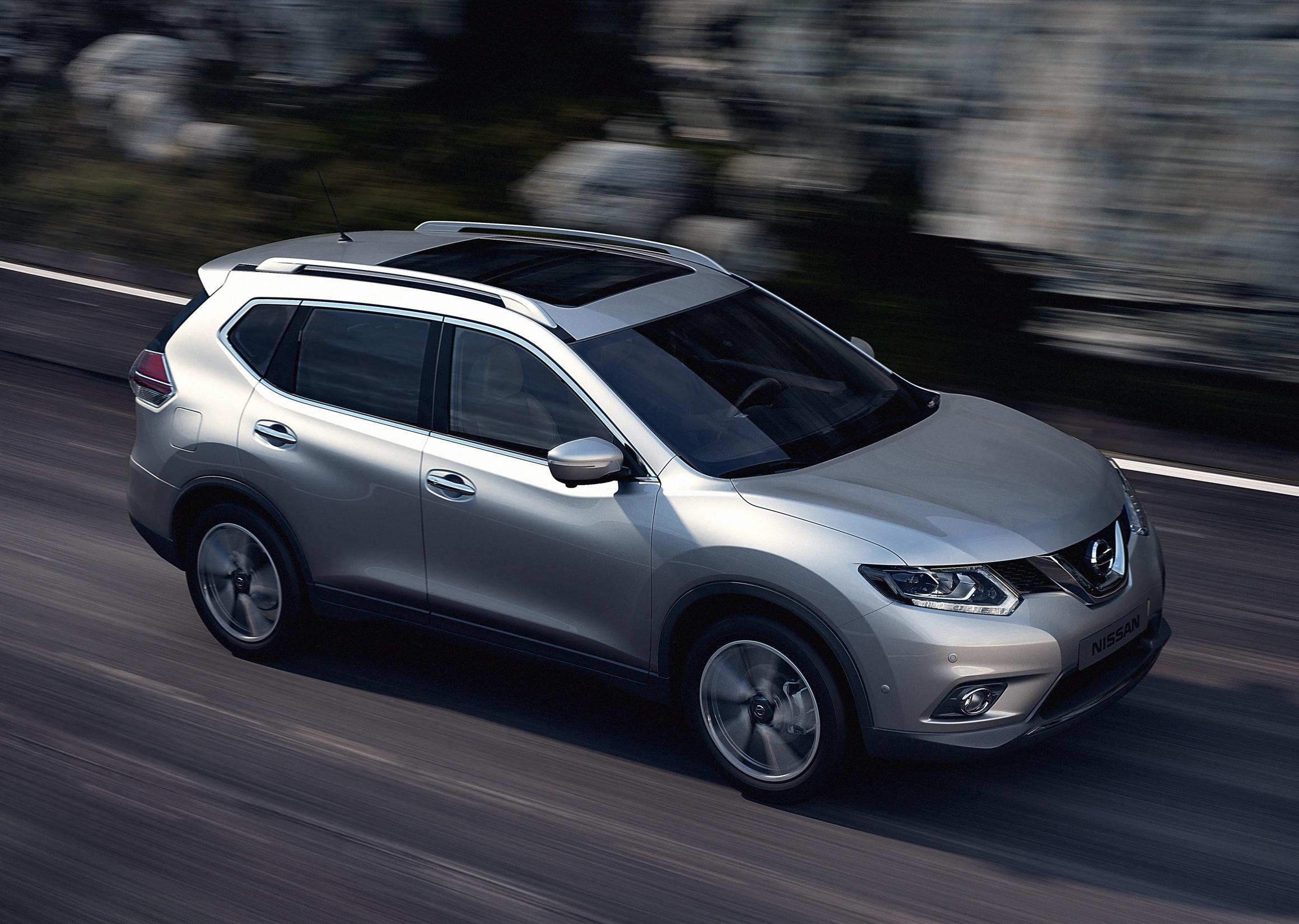
ALL-NEW X-TRAIL STRENGTHENS NISSAN’S CROSSOVER RANGE
- New X-Trail builds on Nissan’s 4×4 heritage and the company’s crossover leadership
- Stylish, comfortable and quiet yet highly capable off-road for every adventure
- Seven seat option with ultra-flexible interior layout
- Sector-best levels of rear legroom
- Fully connected via new NissanConnect system with suite of applications
- Nissan Safety Shield with an extended network of safety features
- Modern design and technology features, including opening panoramic moonroof and LED headlamps
- Two and four-wheel drive options
- New Nissan XTronic on 2WD
- New dCi 130 engine, significantly improved CO2 emissions and lower fuel consumption compared to previous model (starting with 129gr CO2)
- On sale across Europe from July ‘14
- Dimensions: 4635mm long, 1820mm wide, 1695mm high, 2706mm wheelbase, 210mm ground clearance
GENEVA, Switzerland (4th March, 2014)- Nissan is confirming its position as the world leader in crossovers with the arrival of the all-new X-Trail. Completely redesigned from the ground up, the X-Trail joins the Qashqai, Juke and Murano in Nissan’s all-encompassing crossover family – bringing new technology, style and class-leading levels of practicality.
OVERVIEW
The new model combines Nissan’s acclaimed 4×4 heritage with fresh ideas and technologies inspired by the brand’s ground-breaking crossover models. Together they form a car that redefines the compact SUV segment.
Built on the new, jointly-developed Renault-Nissan Alliance Common Module Family (CMF) platform, the new X-Trail is just as tough and accomplished as the previous generation model, but adds crossover style and efficiency, exciting design, innovative technology and exceptional comfort.
Nissan’s desire to make the new X-Trail the most comprehensive offering in the C-SUV sector provided the driving force behind the car’s bold new design. Fitting perfectly into the brand’s vision of modern crossover SUV styling, the new X-Trail features a striking new look that defines Nissan’s latest design language.
Thanks to a smooth yet muscular body, the new X-Trail combines strength and the spirit of adventure with organic, flowing lines. The elegant yet sporty profile also integrates a host of new design features and details, including bold new headlamps – available with LED as standard on high-grade models – and a distinctive new LED signature strip that makes the car instantly recognisable at night. Other details include an powered tailgate and an opening panoramic moonroof.
Inside, the new X-Trail offers a completely new environment for occupants. Designed from the very outset, including seven seat (optional), the cabin features a raked theatre seating layout that ensures every passenger has a great view out. Featuring premium materials and intelligent design throughout, the new X-Trail sets new standards for rear seat access, space for optional third-row passengers and in-car technology. The X-Trail also showcases the latest-generation NissanConnect system that offers smartphone integration and a host of innovations including several in-built Apps to enhance the connected driving experience.
Powering the new X-Trail is a powerful yet frugal dCi 130 engine that delivers strong torque and excellent refinement at all speeds. Available in two and four-wheel-drive forms, the latter features Nissan’s latest-generation ALL MODE 4×4-i transmission. Coupled with Nissan’s new Chassis Control system and Nissan Safety Shield, the new X-Trail’s drivetrain provides the driver with a comprehensive network of safety and comfort features that ensure every journey is an enjoyable one.
The new X-Trail will play a highly significant role in Nissan’s growing crossover family. It will be built at nine different manufacturing sites around the world for a vast array of markets. Globally, its predecessor was one of the company’s biggest selling vehicles and the new version is expected to make a significant contribution to Nissan Power 88, the company’s mid-term business plan covering fiscal years 2011-2016.
New X-Trail in detail
DESIGN
Combining the sleek and stylish lines of a modern crossover with the robust appeal of a typical SUV, the new X-Trail sets new standards for design in the C-SUV sector. A marked departure from its squared-off predecessor, the new X-Trail showcases next generation SUV design, introducing a smoother, more flowing look without compromising the vehicle’s off-road abilities.
Using an advanced new platform, Nissan’s design team was able to take full advantage of the architecture’s longer wheelbase and broader track. In keeping with Nissan’s crossover design language, the new X-Trail places strong visual emphasis on the wheel areas, with the trademark large arches forming the cornerstones of the design. Combined with a dipping roofline, deeply sculpted flanks and rising window line, the new X-Trail fully exploits Nissan’s crossover design DNA to create a car that delivers a stylish and modern appearance.
As customers have come to expect from Nissan, the new X-Trail features a host of intelligent and useful design details.
The front end, for example, combines complex shapes with crisp lines and intelligent use of light and shade. The all-new LED headlamps cut into the bumpers, cleverly combing the upper and lower halves of the body. The lamp clusters themselves are intricately detailed, with a striking new lighting signature that gives the new X-Trail a distinctive look in low light conditions.
At the rear the new X-Trail blends bold new styling cues with existing Nissan touches. The rear light clusters, for example, display the familiar ‘boomerang’ shape, while the characteristic D-pillar provides a strong visual link to both the Juke and Qashqai.
As with the exterior, the new X-Trail’s interior has undergone a dramatic transformation. With more space, improved ergonomics and a host of new premium features, it sets new standards for comfort and equipment in the C-SUV sector.
The main dashboard area combines advanced technology with an intelligent layout that allows the driver to concentrate on the road ahead. The split-level dashboard has been designed to be as clear and easy to navigate as possible, with the gently raised centre console housing both the infotainment system and the ventilation controls.
The redesigned combimeter features the Advanced Drive-Assist Display, a large five-inch colour display screen located between the two main dials. This high-resolution screen displays information from, among other sources, the new X-Trail’s safety systems, and has been designed in such a way that drivers can receive warnings without having to take their attention away from the road.
The centre console houses the latest NissanConnect system with a seven-inch high-resolution screen and a host of smartphone connectivity features.
Quality and attention to detail have come to typify Nissan crossover design, and the new X-Trail is no exception. The cabin area features a host of high quality materials, including chrome, piano black and leather with contrast stitching. To further enhance comfort for occupants, Nissan examined every surface where the driver or passenger comes into contact with the car. As a result, the door armrest pads and centre console pad is eight times thicker than sector rivals offer. Other touches include a large between-the-seats storage box large enough to take an iPad or 10-inch tablet.
Equally impressive is the large glass moonroof – the biggest available in the class. Not only does it bathe the new X-Trail’s cabin with natural light, the front half can also be opened to provide extra ventilation.
Exeptional Practicality
Practicality is another area where the new X-Trail excels. Designed from the start with the optional third row of seats, the new X-Trail’s cabin takes full advantage of the new platform’s longer wheelbase to deliver class-leading levels of space for occupants. Nissan knows that quality is as important as quantity when it comes to accommodation, which is why every seat in the new X-Trail has been carefully designed to be as comfortable and as practical as possible. All three rows are arranged in a theatre-style layout, with the mounting points for the second and third rows being higher than the ones in front.
Where some rivals fit a simple, fixed bench in the second row, the new X-Trail offers a sliding and reclining function that allows owners to adapt the luggage space and comfort to their needs. The optional third row seats have a double fold function that allows them to be folded completely flat, while headroom and heel gap also provide ample seating space.
Second row passengers enjoy best-in-sector legroom thanks to the extended wheelbase and a new design of front seats that features deeply sculpted backs.
Up front, both the driver and passenger benefit from new seats designed to offer maximum comfort. In addition to the standard seat, Nissan has also developed a new Comfort seat, zero gravity inspired, that delivers improved spinal support with optimised bloodflow to reduce fatigue on longer journeys.
Innovative Storage
The versatility pioneered in the previous model goes a step further in new X-Trail thanks to a smart and innovative double load floor providing flexible storage options (up to nine configurations). The cargo area can be portioned into upper and lower areas in a simple single-handed move. In its top most position, the board can hold up to 10 kilograms of luggage, or 75 kilograms in its middle position. This split cargo solution enables the user to store, for example, a stroller and large items below while creating a fully usable upper load surface for smaller, lighter items.
Access to the luggage area has also been made as easy as possible with remote operation of the power tailgate.
TECHNOLOGY
The new X-Trail is one of the most advanced cars in its sector. Fully connected, the new X-Trail benefits from the latest generation NissanConnect in-car navigation, information and entertainment system. Drivers will also benefit from a comprehensive suite of assistance features that make up the new X-Trail’s Nissan Safety Shield system.
As has become expected practice from Nissan, all the features have practical benefits to make life easier for the driver and occupants.
New NissanConnect is one of the foremost examples of Nissan’s engineering innovation. In its latest form, NissanConnect has evolved to offer smartphone connectivity, to keep owners connected to the outside world wherever their journey takes them. With access to a range of apps covering music, social networking, entertainment and travel through a large, 7-inch colour touch screen, the new NissanConnect is the perfect fit for new X-Trail.
The latest generation satellite navigation integrates GoogleTM features to reveal a host of useful information from weather forecasts to the location of fuel stations, hotels, restaurants and many other points of interest. The ever-popular Send-to-Car function also allows drivers to plan a trip at home and send it to their in-car NissanConnect system at the click of a button. The system includes Bluetooth audio streaming and mobile phone integration as well as Aux-in and USB slots.
The driver also benefits from one of the most advanced meter displays yet seen, with 5 inch TFT colour display incorporating 12 graphic displays accessible on rotation offering advice and warnings covering average and actual speeds, navigation turn-by-turn instructions, audio content, traffic sign recognition, eco driving advice and torque distribution settings in 4WD mode and more.
Around View Monitor with Intelligent Park Assist
Designed to take the guesswork and stress out of finding and parking in a suitable parallel or car park bay, the Nissan’s acclaimed Around View Monitor makes even the trickiest of manoeuvres seem easy.
After automatically measuring the size of an available parallel parking space, Nissan’s Intelligent Park Assist actively steers into the space with the driver controlling forward and reverse motion. The system can also park in car park bays, with the driver benefitting from the bird’s eye view provided by Around View Monitor to guide them through the process.
LED headlamps
All new X-Trails feature LED daytime running lights as standard with higher grade models fitted with LED headlamps. With full LED power for both dip and main beam, the new X-Trail’s LED lights produce a whiter, clearer light than Xenon bulbs and use 50 per cent less power.
Nissan Safety Shield
Nissan Safety Shield is a collection of features designed to enhance the safety of occupants in line with Nissan’s ongoing vision towards zero accidents, a sentiment underlined by the company’s commitment to produce commercially viable autonomous vehicles by 2020.
The new X-Trail’s Safety Shield package is one of the most advanced and comprehensive in the sector, with host of fully automatic systems that combine to offer exceptional levels of protection.
The technologies fitted to the new X-Trail include:
– Forward Emergency Braking
Using a fully integrated radar system that scans the road ahead, the new X-Trail delivers three levels of assistance to drivers. First is an audible warning that alerts the driver if the gap to the car in front is closing. If the driver fails to react to the audible warnings, the brakes are automatically partially applied. Finally, if the gap is still closing, the brakes will be applied harder if necessary.
– Driver Attention Alert
With one in road five accidents caused by driver fatigue, the new X-Trail’s Driver Attention Alert system is an important new addition to the car’s safety package. After learning your driving style, the system constantly monitors driving inputs, showing a dashboard alert on the central combimeter if steering becomes erratic, indicating the driver should take a break.
– Traffic Sign Recognition
This clever system acts as an extra pair of eyes that can detect speed limit signs and display their information to the driver. Speed limit signs are automatically read by the front-facing camera, which has been programmed to work across Europe, regardless of national sign typography. It even recognises that some countries enforce a weather dependent lower speed limit if it’s raining, so both dry and wet weather limits are displayed to the driver.
– Lane Departure Warning
Designed to alert the driver if the new X-Trail starts to drift out of lane, Lane Departure Warning uses advanced computer programming to detect road markings. This allows the system to determine if the car is moving out of position. If it does, and the driver has not operated the indicators, a warning is given.
– Blind Spot Warning
The new X-Trail’s Blind Spot Warning system uses the Around View Monitor to detect vehicles in the hidden blind spot areas. If a vehicle is detected in either blind spot, a discreet warning light illuminates in the door mirror. If the driver indicates to change lanes and the system detects a vehicle in the danger area, the light flashes and an audible warning is given.
– Moving Object Detection
Taking parking safety to a new level, the new X-Trail’s Moving Object Detection system combines the vehicle’s front and rear parking sensors with Nissan’s acclaimed Around View Monitor ‘bird’s eye view’ parking aid to deliver an extra level of protection.
If, when stationary, something moves into the area covered by the four cameras, the system will give an audible warning and highlight the area in which the moving object is detected. Mounted on the tailgate and having a fish-eye lens, the rear wide view AVM camera has a sweep of vision in excess of 180 degrees, giving it an unparalleled field of vision at the back of the car. Images from the camera are displayed on the large seven-inch NissanConnect screen.
– High Beam Assist
Designed to ensure that the new X-Trail’s lighting system provides maximum illumination at any given time, this system combines a high-resolution camera with advanced software to detect when to switch from low beam to high beam headlights when it recognizes oncoming or distant traffic.
CHASSIS
ALL MODE 4×4-i
In keeping with the class leading standards set by the previous generation model, new X-Trail adopts Nissan’s advanced electronic four-wheel drive system, ALL MODE 4×4-i. Controlled via a rotary switch on the centre console, it offers a choice between two-wheel drive, Auto mode or Lock offering permanent four-wheel drive.
In the ‘default’ Auto mode, the system constantly monitors throttle opening, engine speed and torque to anticipate wheel spin and to distribute torque between front and rear axles as needed, at speeds of up to 80 km/h.
Above that speed, the system reacts to wheelspin, again shifting drive rearwards to restore traction as required. For tricky conditions and at low speeds, Lock mode gives new X-Trail permanent four-wheel drive, while drivers also have the option of a two-wheel drive only version.
Nissan Chassis Control Technologies
Ready to exceed the expectations of compact SUV drivers, four electronic systems have been designed to make life with the new X-Trail more comfortable and even safer.
Active Ride Control monitors the road surface to detect undulations which could potentially upset the pitch of the car body and alters the damping to compensate. Active Engine Brake, meanwhile, harnesses the power and controllability of the XTronic transmission to add a degree of engine braking while cornering or when decelerating to a standstill. The benefits are greater braking control and enhanced feel with less pedal effort.
A third system, pioneered in the premium segment, is Active Trace Control. By using on board sensors to monitor speed, steering angle, throttle opening and braking effort, Active Trace Control brakes wheels individually, as required, to reduce understeer and help the driver steer a safer path through bends: it is particularly effective on slippery, wet roads.
In addition, the new X-Trail benefits from Hill Start Assist. This uses the new X-Trail’s ESP system to detect when the vehicle is starting on an incline. The system applies the brakes to all four wheels, releasing when the throttle is pressed or after 2 seconds – whichever is sooner. The driver is alerted of the system’s operation via the dashboard combimeter that displays a Hill Start Assist indicator.
DRIVETRAIN
The new X-Trail’s drivetrain is another area where Nissan has been able to use technology and innovation to enhance the driving and ownership experience. With a brief to retain the previous model’s famed off-road ability while improving fuel consumption and lowering emissions, Nissan’s engineers developed one of the most accomplished drivetrains in the sector.
The new X-Trail launches with an advanced dCi 130 turbodiesel powerplant with a choice of two and four-wheel drive and the availability of an XTronic automatic gearbox for the former. A 1.6-litre DIG-T turbocharged petrol engine with 163PS will be added to the range later in 2015.
Powerful, flexible engine
At the heart of the new X-Trail is a muscular four-cylinder dCi 130 powerplant that generates 320Nm of torque. In line with Nissan’s approach to downsizing, the 1.6-litre unit produces same torque than the previous 2.0-litre dCi unit and is considerably more efficient and cleaner. By reducing power sapping friction in its drivetrains, new X-Trail provides excellent performance from the latest generation of downsized engines, providing the pace of a bigger powerplant with the economy and emissions of a smaller one.
Jointly developed with Alliance partner Renault, the 130PS (96kW) unit is one of the most advanced diesel engines in its sector, with a host of technical innovations designed to maximise fuel consumption and reduce CO2 emissions.
Among these are a cold-loop, low-pressure exhaust gas recirculation system that recycles exhaust gas at a lower temperature to reduce emissions of nitrogen oxides and CO2. The engine unit also features optimised thermal management that allows the engine to reach operating temperature much quicker. This, in turn, reduces friction losses when starting from cold and improves fuel efficiency.
Driving down CO2 emissions
The new dCi 130 unit is much cleaner than the engine it replaces. Offered with the option of two- or four-wheel-drive, two-wheel drive models enjoy CO2 emissions of only 129g/km in manual form, while versions equipped with Nissan’s advanced XTronic automatic gearbox emit 135g/km. All-wheel drive models equipped with Nissan’s ALL MODE 4×4-i transmission emit 139g/km – a significant 18 per cent less than the outgoing model.
To achieve these impressive new figures, Nissan’s engineers did more than just improve the efficiency and performance of the engine and transmission. By reducing weight and optimising the car’s aerodynamics, Nissan has been able to make the new X-Trail more efficient. Despite having a larger surface area than the previous model, numerous new features have been introduced to counteract the increase in size. For example, the tailgate is constructed largely of plastic – a move that has saved 7kg over the existing design. New aero-friendly door mirrors and an underfloor spoiler that covers the exhaust and rear panel also play their part in making the new X-Trail the most efficient ever.
Advanced transmission options
From launch, the new X-Trail is offered with a choice of two gearboxes; a six-speed manual and a new XTronic automatic (two-wheel-drive versions only).
The XTronic transmission has been engineered to deliver a smooth and natural driving experience. Unlike conventional variable transmissions, the new X-Trail’s XTronic gearbox mimics the behaviour of traditional, multi-ratio automatic gearboxes during hard acceleration, with stepped changes. In more gentle driving, the ratios are subtly adjusted to give ultimate smoothness. This means the XTronic transmission offers the best of both worlds for drivers, with smooth low-load power delivery and direct performance during higher acceleration driving.
VALUE AND EQUIPMENT
As buyers have come to expect from Nissan, the new X-Trail launches with a class-leading level of standard equipment. Available in three familiar grades: Visia, Acenta and Tekna.
All grades feature air-conditioning, alloy wheels and six airbags, LED daytime running lights, five-inch colour combimeter display, Bluetooth with microphone, cruise control and speed limiter. Hill start assist, follow me home lights and a luggage board system are also among the features fitted as standard.
Range-topping Tekna models feature an array of technologies that further confirm Nissan’s lead in the crossover market. These include LED headlamps, leather seats, electrically-adjustable driver’s seat, front and rear parking sensors and 19-inch alloy wheels. In addition, Tekna models also feature Intelligent key with engine start button, Forward Emergency Braking, Lane Departure Warning, High Beam Assist and Traffic Sign Recognition.
Standard and optional equipment will vary by market.
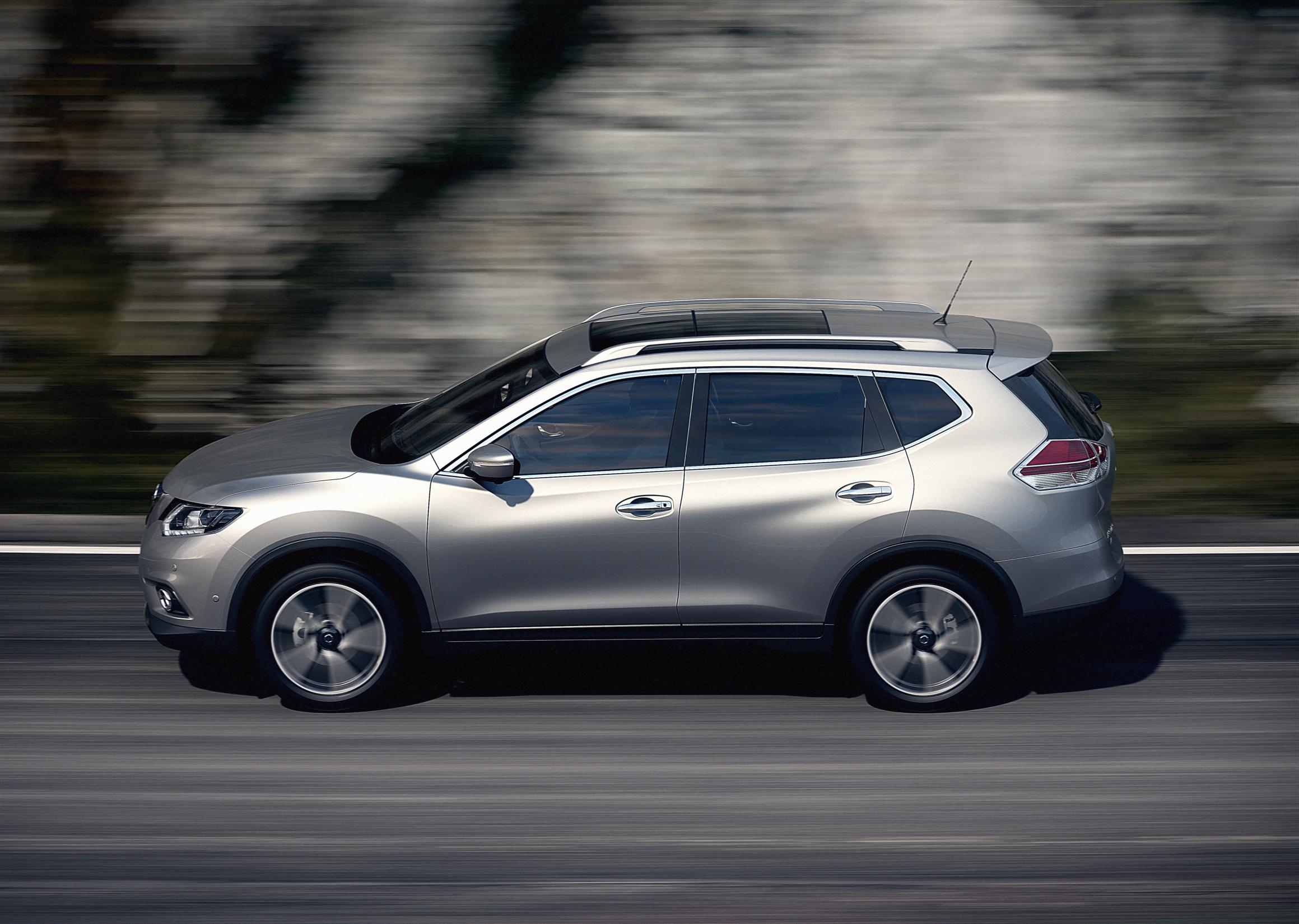
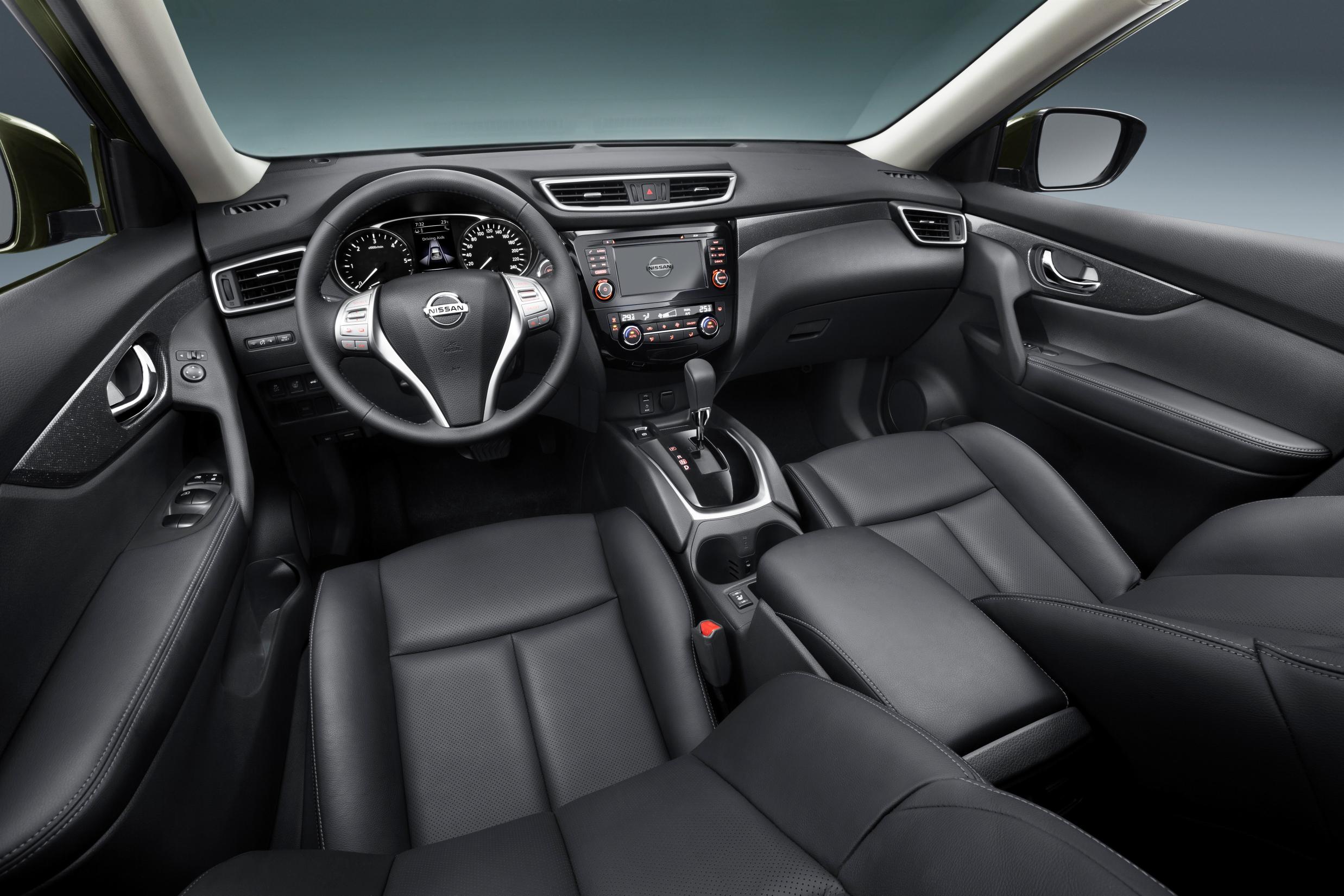
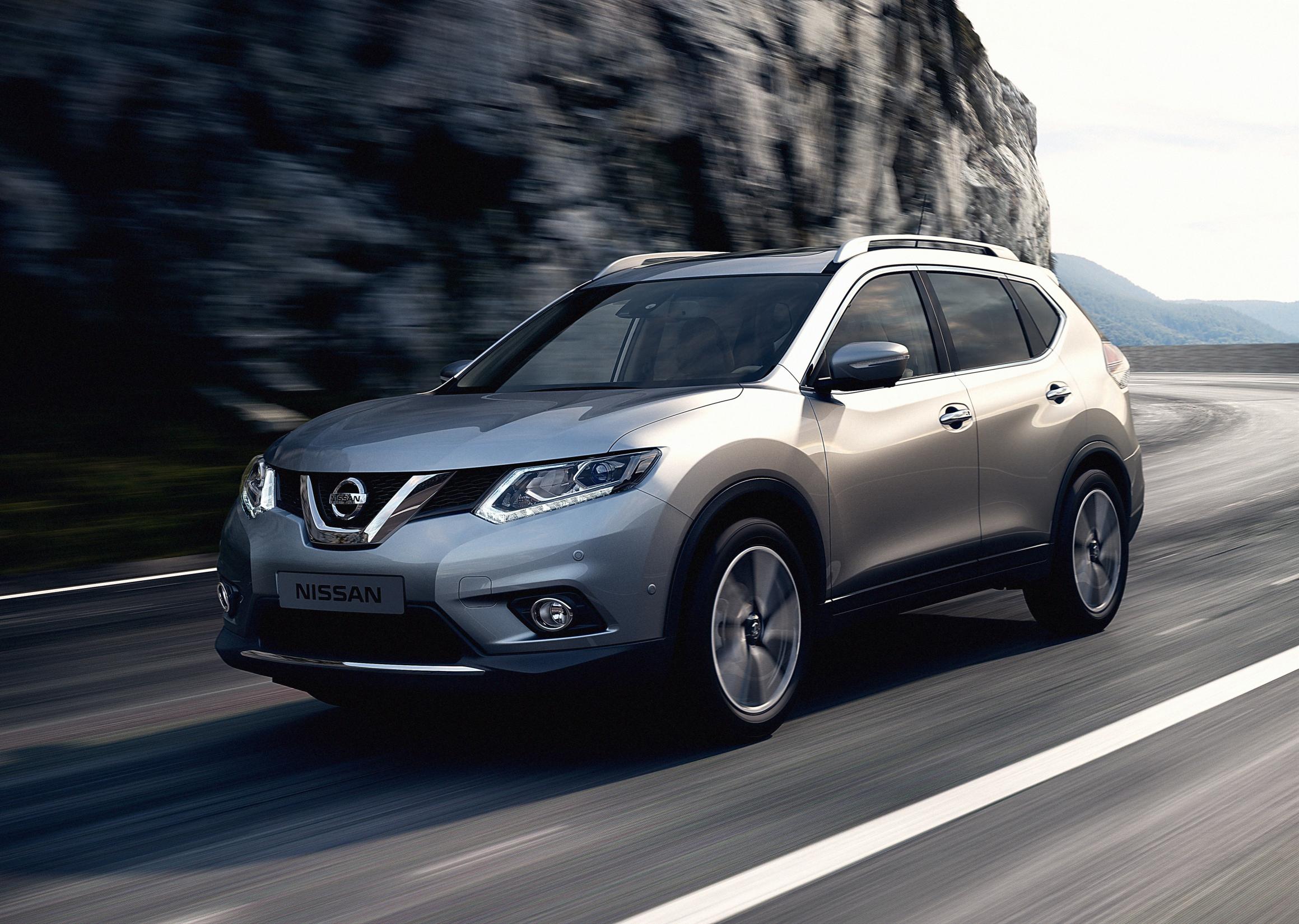
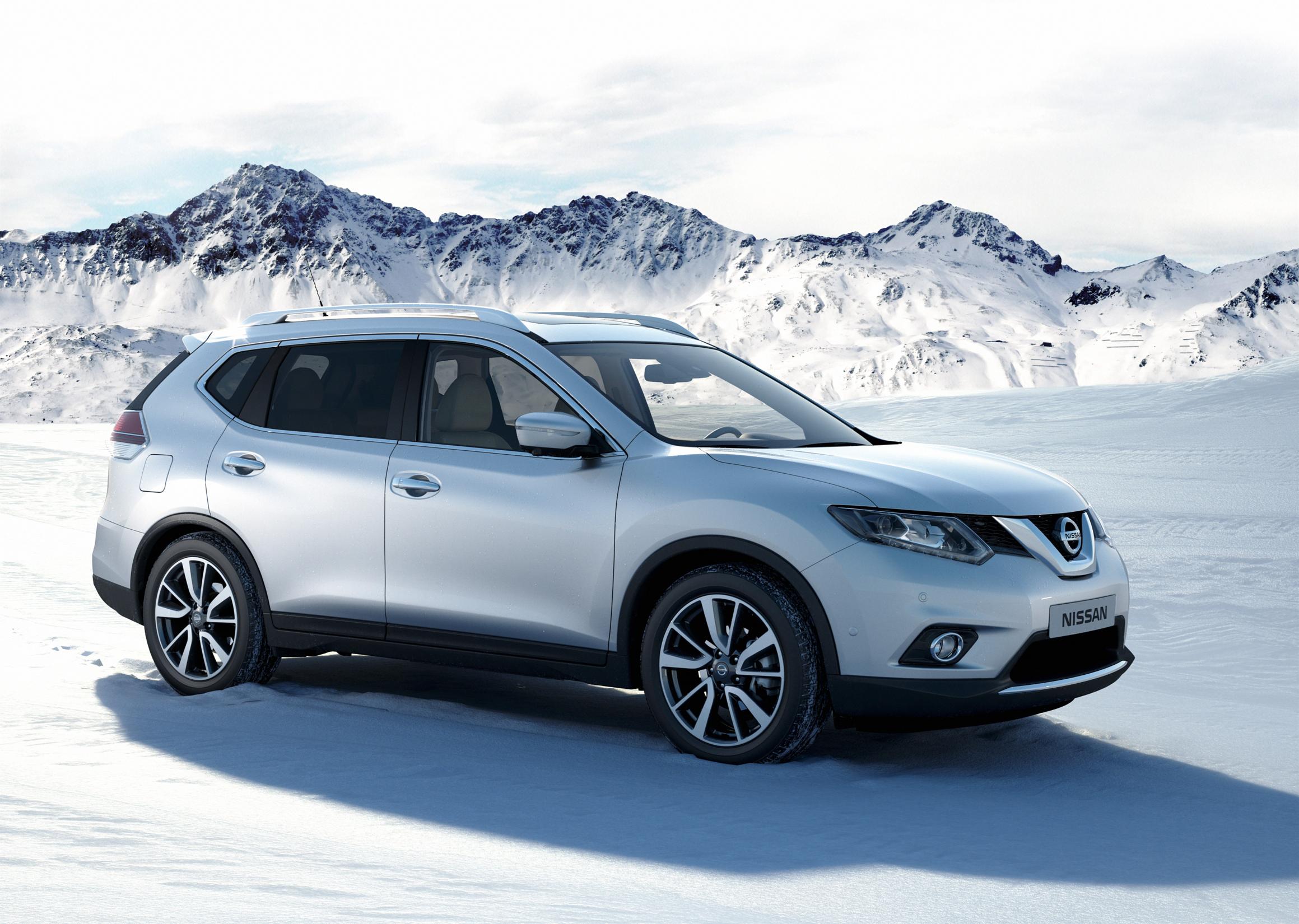
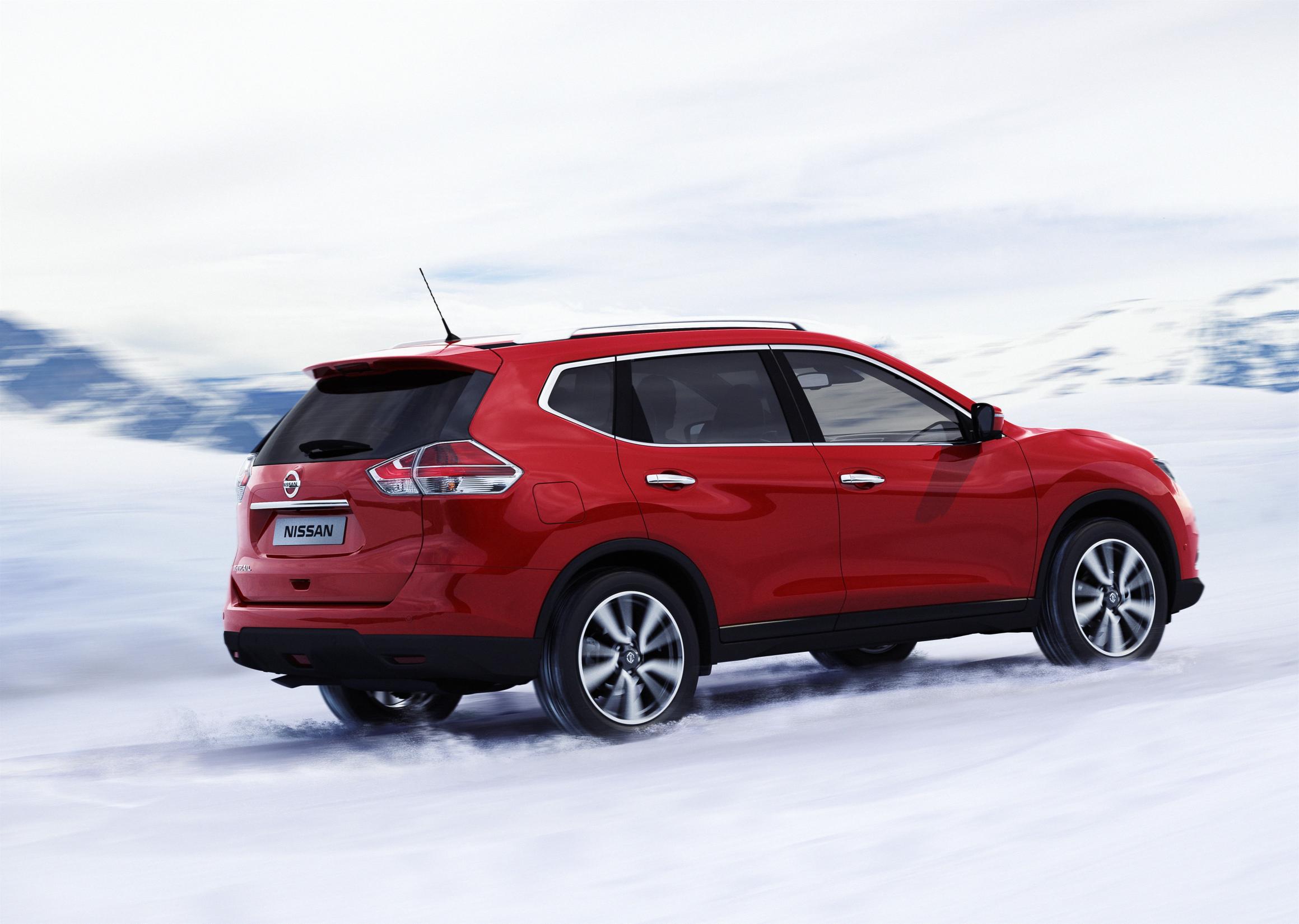
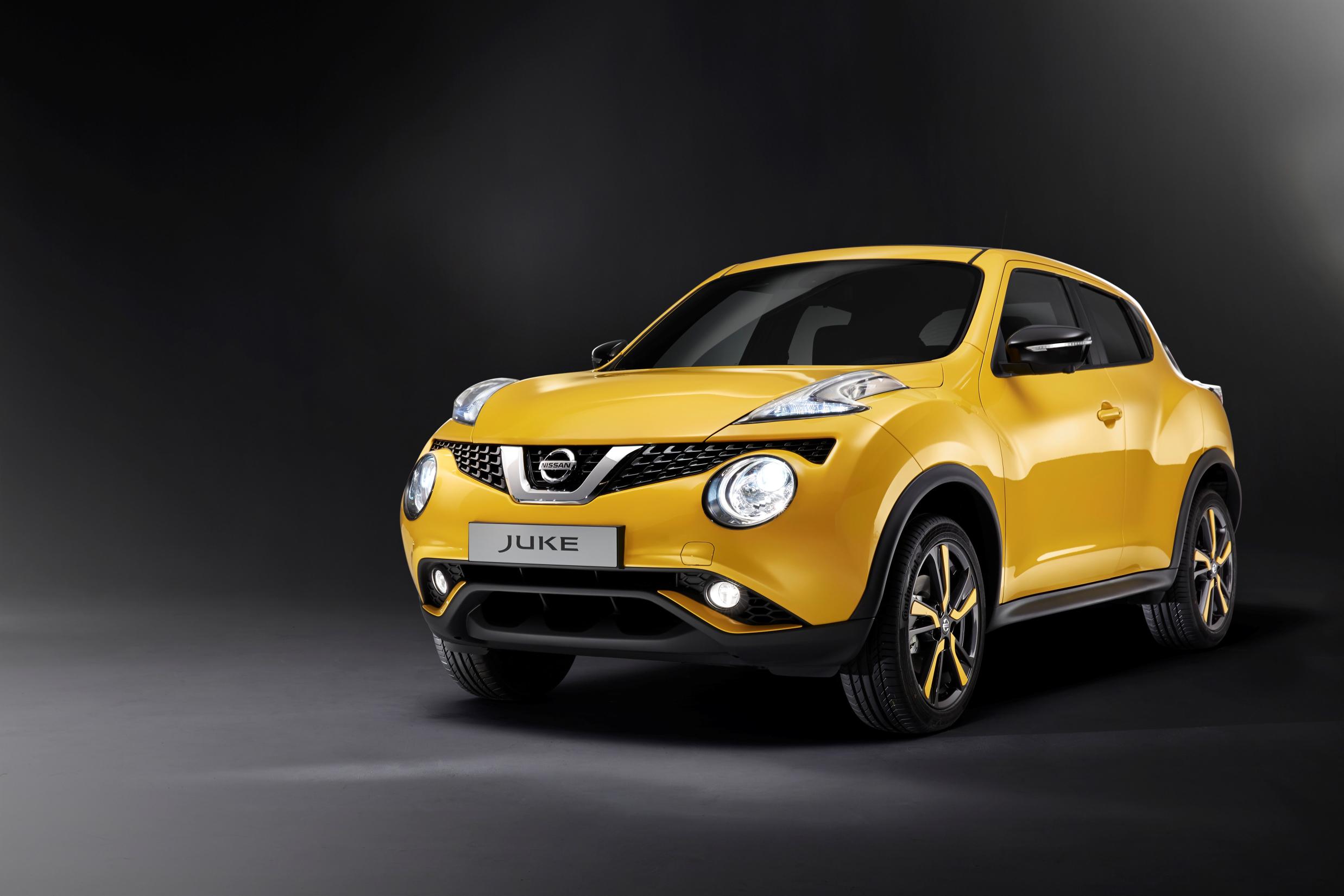
NEW NISSAN JUKE: DESIGNED TO THRILL
Significant revisions to Nissan’s pioneering crossover will keep trend-setter ahead of the rest
- Efficient new downsized 1.2 DIG-T turbocharged petrol engine
- Dramatic design enhanced with significant styling changes pushing further both premium and sporty design cues
- Technology enhanced with advanced NissanConnect system
- Nissan Safety Shield added along with groundbreaking Around View Monitor four-camera parking aid
- Improved luggage capacity +40% and enhanced versatility
- Extensive personalisation programme
- Opening sunroof and Xenon lights
- On sale from summer 2014
GENEVA, Switzerland (04 March, 2014) – When it arrived a little more than three years ago, the Nissan Juke used innovation to create a whole new market segment. Just as the Nissan Qashqai pioneered the original crossover market, the Juke used dramatic design and advanced technology to break new ground in a more compact crossover package.
The Juke’s combination of highly individual styling, strong driving dynamics and sophisticated interior equipment has allowed it storm from zero to 420,000 sales in less than 40 months, easily eclipsing its rivals.
Now, following Nissan’s established practice of constant development comes the next chapter in the Juke story. Establishing itself as the original stand-out model in the growing small crossover market with premium style and refinement, the new Juke is ready to once again stamp its authority on the segment it created.
Already recognised as the design trend-setter, the new Juke benefits from a series of design enhancements, new engines, new equipment and a wide-ranging personalisation programme.
Among the changes are a new design at the front and rear with greater emphasis on both premium refinement and sporty design cues; a new downsized 1.2-litre turbocharged engine offering greater performance, economy and lower emissions; a revised 1.6-litre DIG-T engine; improved four-wheel drive with Torque Vectoring System; new alloy wheels; advanced equipment including a new audio system, the latest generation NissanConnect driver-vehicle interface, Nissan Safety Shield, Nissan’s Dynamic Control system, plus the option of a new opening glass roof.
Revisions in the luggage area have increased space by 40 per cent in two-wheel drive versions up to 354L, while there’s even greater opportunity for owners to really stamp their own personality on their Juke. A range of new colours and interior themes are available with a number of different personalisation packs.
The changes and range additions will accelerate the growth of Nissan’s second most popular model in Europe, helping it to emulate the remarkable achievements of its big brother Qashqai.
Juke is the best seller in the premium B-segment, outperforming all direct competitors including those from the top German brands. And it’s not just the entry-level models which have helped Juke to the top: the best selling engine to date has been the 1.6-litre petrol unit while the top Tekna grade accounts for more than one third of all sales.
Buyers have also been attracted by a strong range of special versions – notably the Shiro and the advanced n-tec models – and the Kuro and Ministry of Sound limited editions, while the sports oriented Nismo has added driving thrills as well as breadth to the range.
On its way to a total of 420,000 sales, Juke has achieved 135,000 sales in 2013 with its popular set to increase with the introduction of the new version. All Juke models sold in Europe are built in Europe, at Nissan’s highly productive plant in Sunderland, UK where three shifts per day are needed to cope with demand.
Significantly for Nissan, Juke has attracted a huge number of buyers new to the brand. As much as 85 per cent of sales have been to first-time Nissan owners, not only making it the highest conquest model in the Nissan range but a model that comfortably outperforms the B-segment average with many of those new buyers downsizing from larger cars.
“We stunned the industry with Qashqai, the original crossover, and we’ve done it again with Juke. If anything, Juke is even more daring and different than Qashqai and appeals to a younger, more out-going audience.
“The changes we have made to new Juke will extend that appeal even further to cement Nissan’s position as the leading brand in the crossover market,” said Guillaume Cartier, Senior Vice President, Sales and Marketing for Nissan in Europe.
New Juke will go on sale across Europe in the summer, 2014.
The changes in detail:
Exterior
Bold design has always set the Juke apart from any rival, offering a mixture of crossover toughness with sporting appeal that has seen it become a design icon.
To radically alter the proportions would undermine the Juke’s unmistakable presence, but designers have still managed to make significant changes to the car’s styling.
At the front, the upper lamps have been redesigned and now incorporate bi-intensity LED daytime running lamps while the headlamps now have Xenon bulbs for better visibility and new lens covers. The grille incorporates the new Nissan brand signature while the front has been toughened with new and more robust trim beneath the bumper.
Door mirrors have been revised to include LED side turn strip repeaters and, where fitted, cameras for the Around View Monitor.
At the rear the bumper has a more aggressive shape to match new revised boomerang tail lamps with LED light guide technology, giving the new Juke a more distinctive appearance at night.
The new colour palette now extends to ten colours and includes three new shades: Sunlight Yellow metallic, Ink Blue metallic and solid Red.
A new range of wheels completes the exterior revisions, with 16-inch steel and alloys available on entry-level Visia models and different styles of 17-inch alloys on Acenta and Tekna variants. A new 18-inch alloy wheel will also be available with coloured inserts available allowing drivers to add their personal touch.
In addition, the extensive new personalisation packs include the opportunity to add drama with brightly coloured inserts which completely change the look and feel of the wheels. Different packs also allow contrasting colours to be applied to the mirror caps, side sills, roof spoiler and door handles.
Interior personalisation
In the same way that the exterior styling differentiates Juke from anything else on the road, so the interior has a number of distinctive features, including the centre console inspired by a motorbike. And again, changing these features for the sake of it would be counter-productive.
Instead Nissan designers have found ways to make the interior even bolder and more dynamic with different interior themes. In standard cars, the interior theme is a sophisticated grey, giving a technical feel to the car. Add one of the interior personalisation packs and features such as the centre console, door trims and other elements can be coloured red, white, black or even a bright yellow.
Depending on the model, there are two styles of fabric for the seat upholstery – comfort and sport – with leather trim on top versions.
Practicality
Changes have also been made to the shape of the trunk area in two-wheel drive models to boost luggage space by an impressive 40 per cent, taking the overall capacity to a class-leading 354 litres - unlike rivals, Juke can carry a large and a medium suitcase at the same time, and is also deep and wide enough to carry a chassis-type pushchair.
Versatility is further enhanced with flat folding rear seat, making it easier to load large objects, while the inclusion of a two-stage floor in the luggage area makes the space even more flexible.
Equipment
Standard equipment on all models includes LED daytime running lamps, CD radio with an AUX-In socket, gear-shift indicator to promote a more efficient driving style and tyre pressure monitor. The Visia 1.5 dCi and 1.6 Pack versions add alloy wheels, manual air conditioning, drive computer and driver seat height adjustment.
Acenta models are enhanced with front fog lights, 17-inch alloy wheels, automatic air conditioning, remote audio controls, Bluetooth connectivity for phone and audio streaming, cruise control and limiter, Nissan Dynamic Control System and chrome interior touches.
Enhances for the new Juke, Nissan Dynamic Control is an advanced driver control system giving the choice of three different driving modes – Normal, Sport or Eco - along with instant driving information and vehicle setting controls.
Tekna models add power folding door mirrors, light and rain sensors, i-Key with Start/Stop and the latest NissanConnect with rear-view parking/reversing camera, Around View Monitor and Safety Shield.
NissanConnect now offers smartphone connectivity with access to a variety of apps ranging from social media platforms to entertainment including internet radio through a large, 5.8in colour touch screen. The latest generation satellite navigation system integrates with Google® to reveal a host of useful information from weather forecasts to the location of fuel stations, hotels, restaurants and many other points of interest.
A send-to-car function also allows drivers to search for their destination at home and send destination instructions to NissanConnect system at the click of a button. The system includes Bluetooth audio streaming and mobile phone integration as well as Aux-in and USB slots.
When not in infotainment mode, the screen doubles as a monitor for the newest version of Nissan’s pioneering Around View Monitor which gives a complete real-time 360 degree ‘helicopter’ view around the car to make manoeuvring as safe and easy as possible. Using the AVM cameras together with sensors, radar and other advanced technology, Juke’s Safety Shield incorporates a number of features engineered to make the car as safe as possible. These include Lane Departure Warning, Blind Spot Warning and Moving Object Detection, which gives visual and audible warnings to avoid potential collisions.
The final option opens a whole new world to Acenta and Tekna owners, literally. A large open-able glass panel allows not just daylight to flood into the cabin but also fresh air as required. When opened, the panel sits on top of the rear portion of the roof so as not to steal interior headroom. The glass panel measures 964mm wide by 837mm long to cover two thirds of the roof area. This is matched by an opening width of 693mm and an opening length of 301mm to add to the feeling of airiness in the cockpit.
Engines and drivetrains
Three engines are available for new Juke, with changes to the two petrol options: one is new and the other extensively revised. The existing and acclaimed 1.5 dCi diesel with 110ps (81kW) continues unchanged.
The Alliance-developed 1.2-litre DIG-T petrol engine, which replaces the outgoing 117ps 1.6-litre unit, is an advanced turbocharged direct injection engine delivering 115ps (85kW) and generating 190Nm of torque.
Despite its modest size, the 1.2-litre (1197cc) turbocharged engine packs a real punch, offering sharper acceleration and greater torque (190Nm) for added flexibility than the outgoing 1.6-litre naturally aspirated engine.
Its lower weight, standard automatic Stop/Start feature and more fuel-efficient operation translates into cleaner and more economical performance. The 1.2 DIG-T engine emits 126g/km* of CO2 and has a fuel consumption figure of 5.5 l/100km*.
The existing 1.6 DIG-T petrol unit has been further improved to deliver lower end torque below 2,000rpm. Producing 140kW, it is already Euro6 compliant with target emissions of 139g/km of CO2 for the 2WD versions. Among its new features are a higher combustion ratio (increased from 9.5 to 10.5:1), improved low friction technologies and cooled Exhaust Gas Recirculation.
As well as a six-speed manual transmission, new Juke 1.6 DIG-T 4WD is optionally available with a new Xtronic transmission gearbox which further improves fuel efficiency, acceleration and all-round performance.
“New Juke builds on the qualities that made the original such a success. Its unique crossover styling is even more energetic, and the interior makes a real statement.
“The new drivetrain options and advanced technology on offer to the driver keep new Juke ahead of the rest,” said Guillaume Cartier.
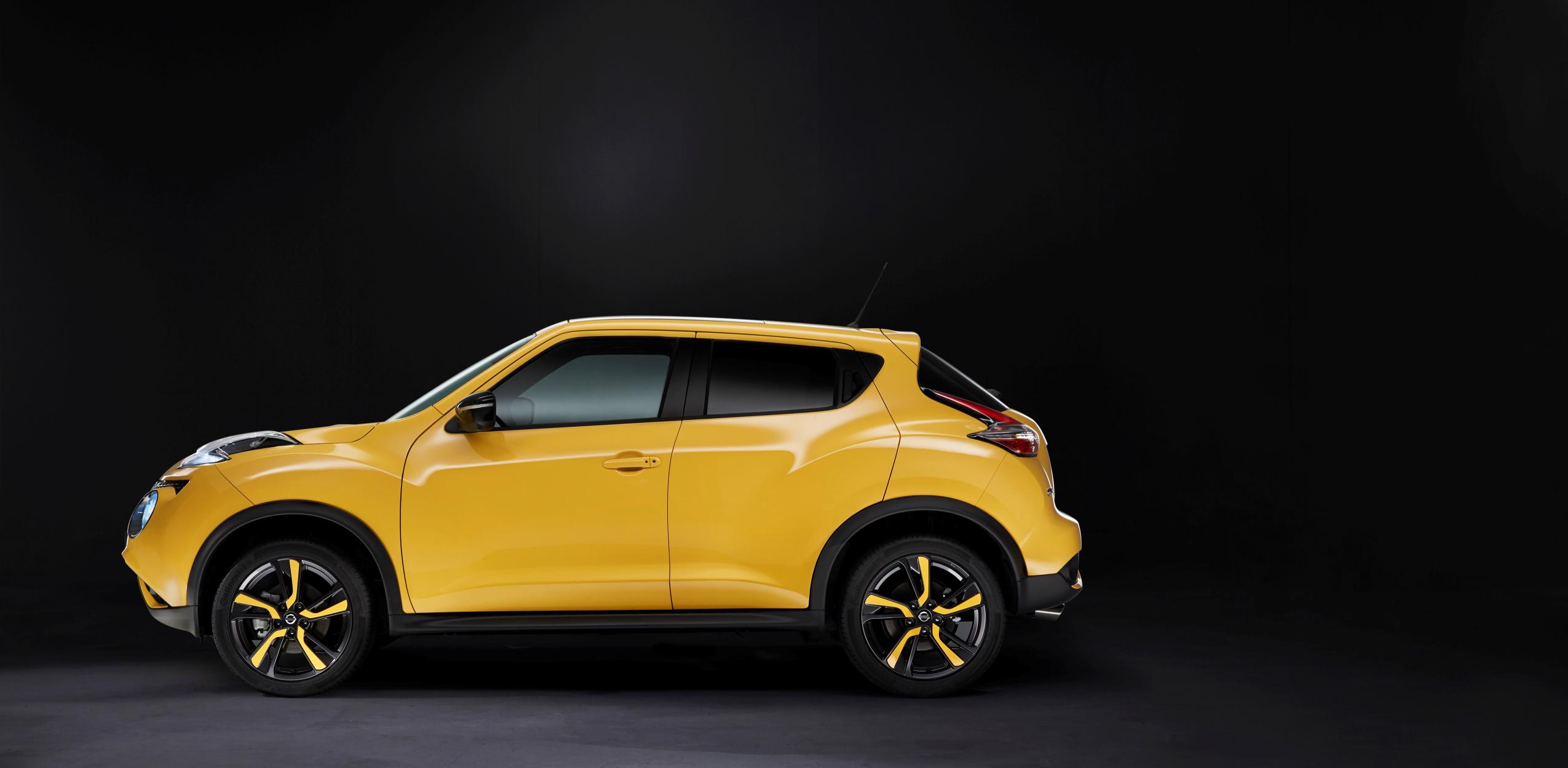
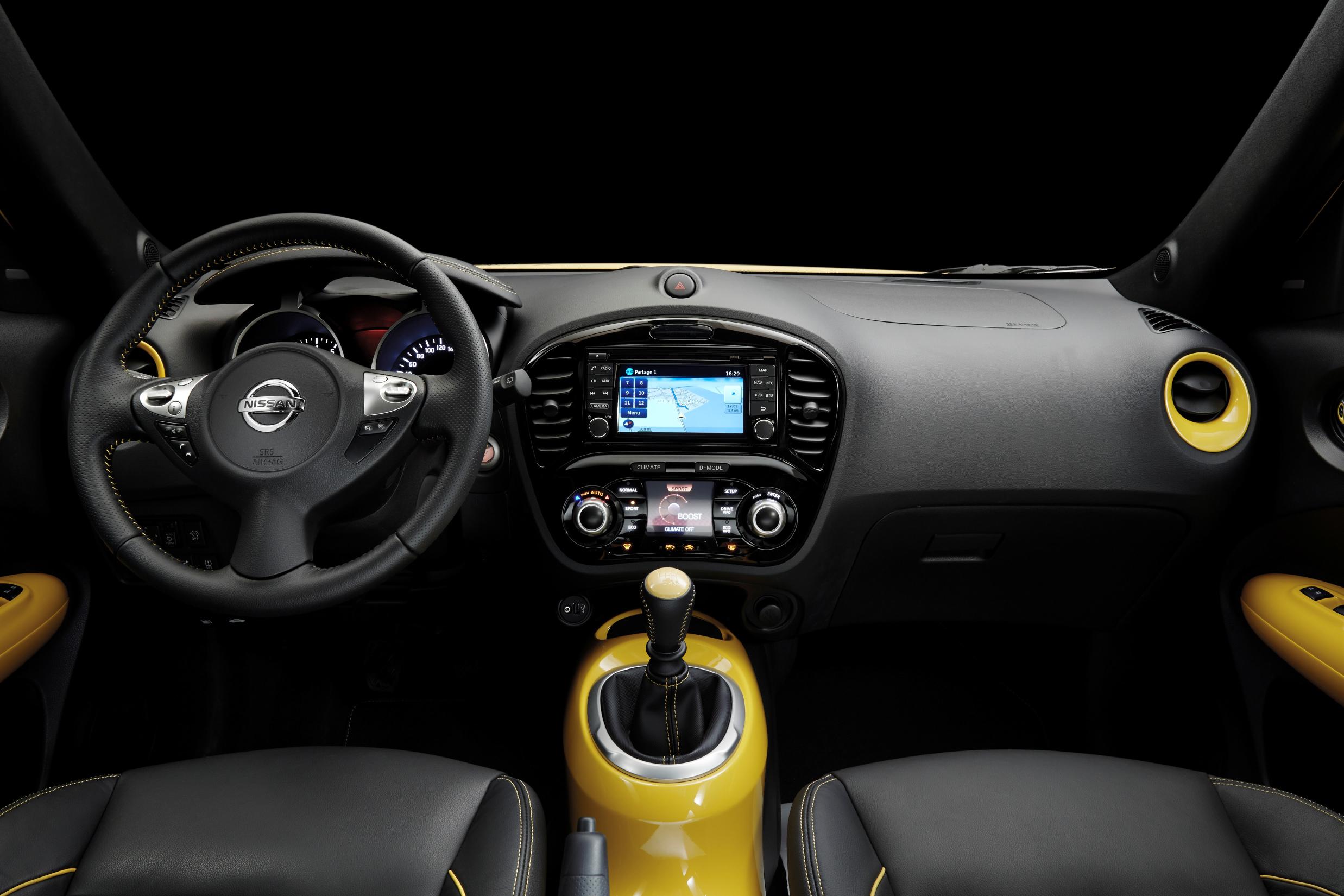
MAKE A STATEMENT WITH YOUR JUKE DESIGN
Follow the lead set by design chief, Shiro Nakamura, and use Nissan’s far-reaching personalisation programme to create a truly unique Juke
- Dramatic contrasting colour options available inside and out
- Wide range of alloy wheels with huge colour choice
- First Personal Juke created by Nissan’s Chief Creative Officer for his own use
GENEVA, Switzerland (05 March, 2014) – It’s already one of the most distinctive cars on the road, but an extensive personalisation programme means the new Nissan Juke will stand out even more.
As part of a package of changes to the top selling crossover, Nissan has developed a comprehensive range of personalisation options that will allow owners to put their own stamp firmly on their new Juke. Special Personalisation Packs to enhance the interior and the exterior are now available as an option from the factory and further personalisation accessories are available from dealers.
One of the first to create his own unique car is Shiro Nakamura, Nissan’s Senior Vice President in charge of Design and Chief Creative Officer: his very special ex-factory new Juke will be on display at the Geneva Motor Show.
To allow fans and enthusiasts to see how their own individual Juke creation might look, visitors to the Nissan stand at the Show will be able to create their own personalised Juke on an engaging and innovative computer-based module that projects the various colour combinations onto a 1:8 scale model car. You want orange bumper inserts on a black Juke to make it sporty and powerful? Or an elegant purple touch within a black interior? The module allows you to see how it will look.
Encouraging creativity
As well as the raft of enhancements found on every new Juke – which includes a brand new efficient and refined 1.2 DIG-T petrol engine, new advanced technology and various visual enhancements such as an openable glass roof and new front and rear LED lighting – Nakamura-san’s yellow 1.6 DIG-T Tekna has contrasting metallic black elements.
These include the door mirror caps and headlamp finishers in black, while the smart 18-inch alloy wheels and front and rear bumper inserts are finished in the same striking Sunlight Yellow body colour.
The result is a bold visual statement, a spectacular take on an already highly distinctive design.
“For me, yellow is a very dramatic colour. But the addition of black for certain key features adds a new dimension,” said Shiro Nakamura.
“This was my choice, but with all the colour combinations on offer our customers can let their imagination run wild. And I respect their right to determine their own unique choices.”
“A survey of current Juke owners has revealed that their single most important reason for choosing the car was its exterior styling. The personalisation programme will allow owners to enhance the styling in the way they want to,” added Nakamura-san.
A multitude of personalisation possibilities
In its latest form, the new Juke has an extended palette of colours, including three new shades – Sunlight Yellow and Ink Blue metallic and a solid red for greater choice – while the distinctive motorcycle-inspired centre console is finished in grey.
But when a customer chooses an interior Personalisation Pack, the console, door and air vent finishers, instrument meter hood, gear knob, as well as the seats and door trim can be finished in one of four contrasting colours: red, white, black or yellow.
The same colour themes also apply when the customer chooses the exterior pack. It means, for example, a white car can be fitted with red door mirror caps, front and rear bumper finishers and headlamp finishers or a red car being given black features, or… well, the choice is almost endless.
And the choice gets wider still with a further choice of Dealer fitted accessories. These Personalisation+ items increase the contrast colour choice by seven (making 11 in total) and complement the interior and exterior packs for those customers who want to go even further.
Different alloy wheel designs, door handles, side sills, rear hatch handle and roof spoiler are available to personalise the exterior, while tweeter finishers, interior mirror cover, floor mats and armrests in a multitude of colours are available to complete the interior design.
Personalisation is easy, fun and engaging
To create a truly unique Juke, all Personalisation elements can be ordered individually and then it’s simply a case of mixing and matching favourite colours to highlight the aspects desired.
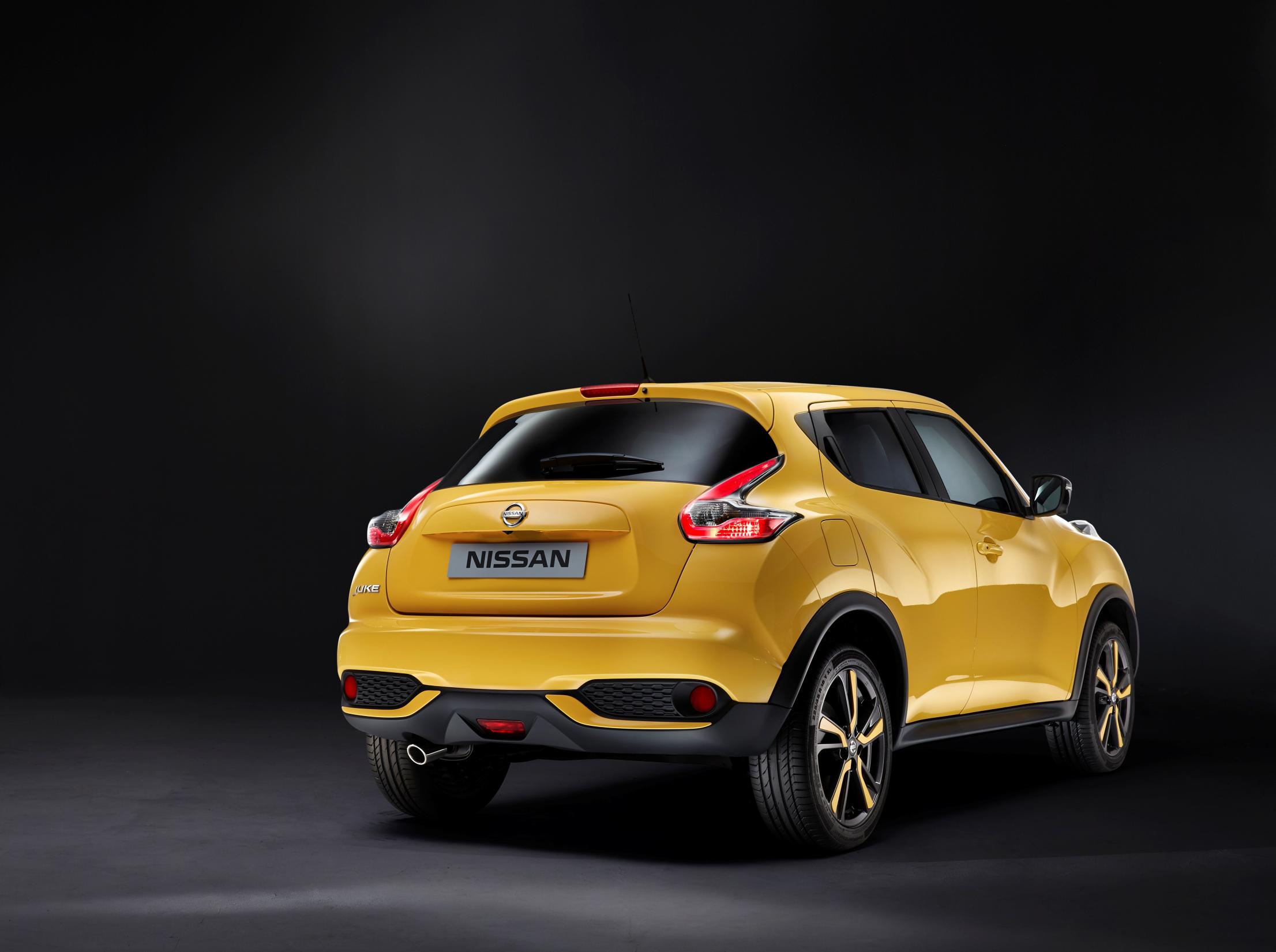
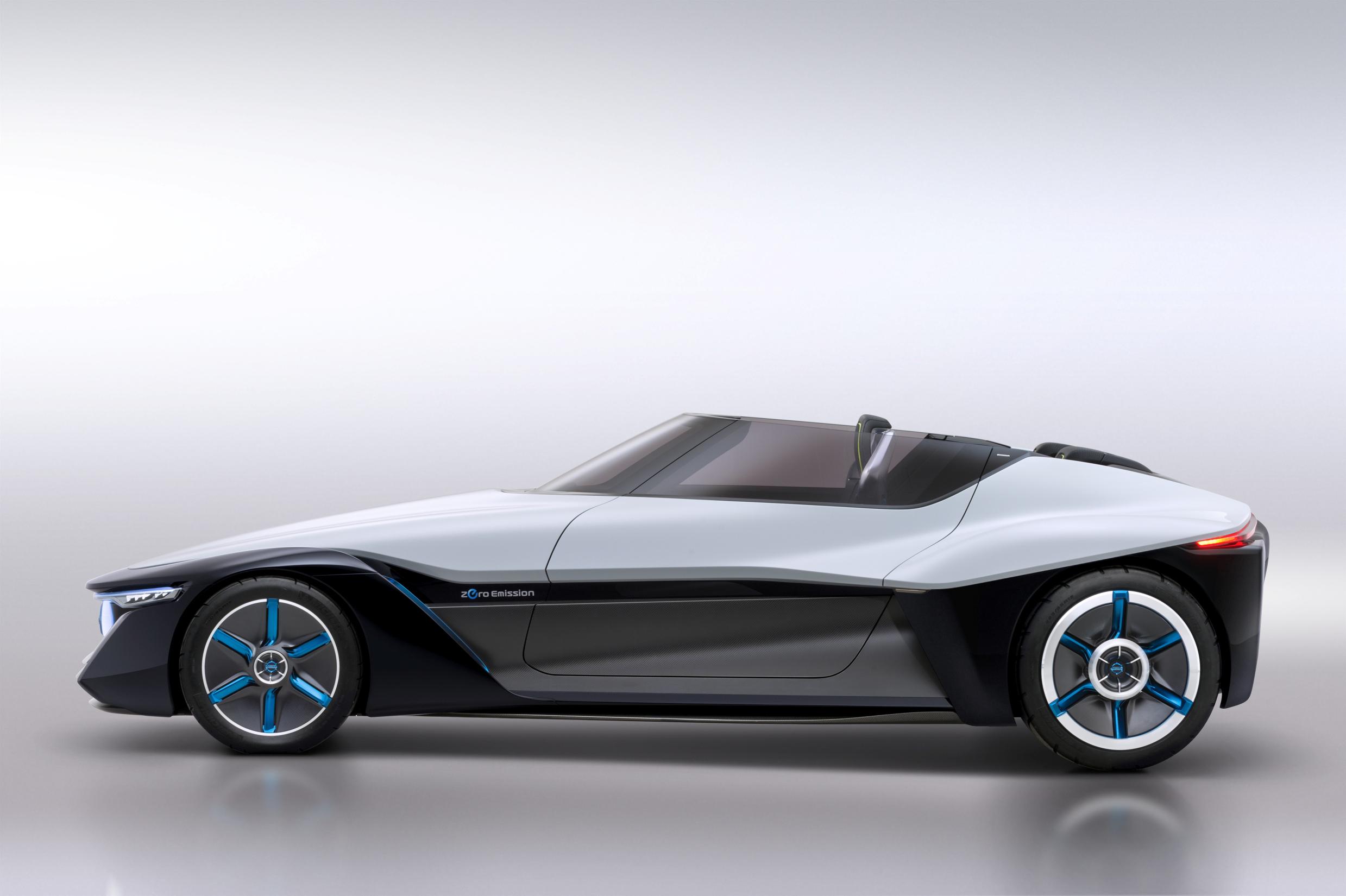
NISSAN BLADEGLIDER ARRIVES IN EUROPE
GENEVA, Switzerland (4 March, 2014) – Demonstrating innovation and excitement in every component, the Nissan BladeGlider made its European debut at the 2014 Geneva Motor Show. Nissan’s latest sports concept will challenge conventional thinking on sports car performance handling, braking and weight distribution. The Nissan BladeGlider features a radical front narrow track layout, where the front is significantly narrower than the rear, creating a swept-wing profile when seen from directly above the vehicle.
First unveiled at the Tokyo Motor Show, Japan, in November 2013, this technology follows in the footsteps of Nissan’s ZEOD RC Zero Emission on Demand racecar (ZEOD RC), which will participate at next year’s Le Mans “Garage 56” event with the narrow front-track design. Director of Nissan Motorsport Innovation, Ben Bowlby, the designer of the ZEOD RC, also consulted during the development of the BladeGlider.
“When you see the narrow front track layout for the first time, everyone is skeptical on how the car will handle,” said Bowlby.” The concept has proved itself on the race track running as fast as the overall contenders. And I’m sure the BladeGlider will meet with the same initial skepticism, but we know, after extensive testing on the racetrack with race drivers behind the wheel, the Nissan BladeGlider has the potential to be the best handling production car in the world.”
Bowlby outlined the performance advantages of the BladeGlider’s narrow front-track/wide rear-track design.
Acceleration
The weight distribution of the BladeGlider makes it ideal for quick, efficient launches from a standstill and intense acceleration once off the line. The primary reason for this is that the rear tires are considerably wider than the front tires, resulting in more traction at the rear, enabling the tires to get a better grip on the driving surface. Also, the wide rear track allows for virtually all of the car’s heavier components-including the two in-board motors, lithium ion batteries and passengers-to sit between the rear tires; hence, most of the cars’ weight (70 percent in this case) sits directly on the two driven wheels. Therefore, when the power is sent to the rear wheels, the mid-engine/rear-drive BladeGlider exhibits very little tire slip, allowing the 285/35 tires to bite into the driving surface and launch the car in a highly efficient manner.
Thanks to the BladeGlider’s extremely narrow front end, which includes the skinny 100/80 tires, air drag is minimal. The BladeGlider features one of the lowest Cds ever for a concept road car, allowing the car to “glide” to speed with little air resistance.
Another benefit to the car’s narrow front end is weight. Thanks to less hardware and smaller components, the BladeGlider’s overall curb weight is considerably less than that of a similar size car with a conventional front end.
Handling
The most impressive, and most remarkable, advantage the BladeGlider has over its conventional counterparts is handling. While traditional performance enthusiast may scratch their respective heads wondering how a car with such a narrow front track can take corners; the answer is relatively simple. The narrow front track of the BladeGlider allows less weight to be placed on the front wheels. While some say that more weight on the front tires equals better grip, the complete opposite is actually true. Sure, with super wide tires, extra load may result in more grip, but this is not an efficient solution, nor is it always true. For example, front-heavy cars are prone to excessive understeer – the loss of grip at the front wheels, where the car does not turn as much as the steering demands. The thinner tires up front allow the BladeGlider to turn in crisply because only 30 percent of the car’s total weight rests upon them. An added benefit is improved steering in terms of effort, feel and precision.
Also, the narrow front track allows the car to have minimal lateral weight transfer through corners, at both the front and rear ends. Cars with wider front tracks dramatically shift their weight to the outside tire when turning, leaving the inside tire to do virtually nothing. Thus, only one tire is steering the car through a corner; but with the BladeGlider, both tires stay in good contact with the road surface and share nearly the same cornering load, virtually working as one unit. And thanks to the independent suspension system, each tire’s effectiveness is augmented through turns.
The wide rear track and wide rear tires also contribute to the BladeGlider’s exceptional handling. By providing a stable and rigid foundation for the car, they allow the car’s front tires to effectively point the nose of the vehicle in the right direction. Think of a sledge hammer and its handle. Put the hammer on the ground and move the handle in the desired direction. It can be done with relatively little effort because the head of the hammer is providing a stable foundation. This unique effect of the BladeGlider can be enhanced with torque vectoring (or an enhanced limited slip differential) that can be programmed into the in-wheel motors, allowing the rear tires to help point the car’s nose.
Braking
Unlike conventional road vehicles, the rear brakes of the BladeGlider do more work than the front brakes when slowing the car down; therefore, they are larger and more powerful than the front brakes (the opposite is true in all other road cars). This provides a tremendous advantage when braking from high speed, as the wider tires, which have most of the car’s weight on them, provide excellent traction when decelerating. With the rear tires doing most of the work during acceleration and braking, and the front tires providing grip through turns, the overall performance workload at the four points of contact is distributed ideally: the front tires steer the car, the rear tires propel and stop the car.
X-Factor
With the driver sitting in the middle of the cockpit and near the rear wheels, the BladeGlider’s chassis relays clear and immediate feedback to the driver. Therefore, when the car’s front or rear tires lose grip, the chassis lets you know immediately, giving the driver ample time to correct car’s trajectory.
Another added benefit is tire wear, or lack thereof. Each rear tire and each front tire are doing an equal amount of work (as noted above), so their wear rate is also equal. Conventional cars frequently suffer from uneven tire wear, but the BladeGlider won’t require a tire change as often as a conventional car, especially when subjected to aggressive, spirited driving.
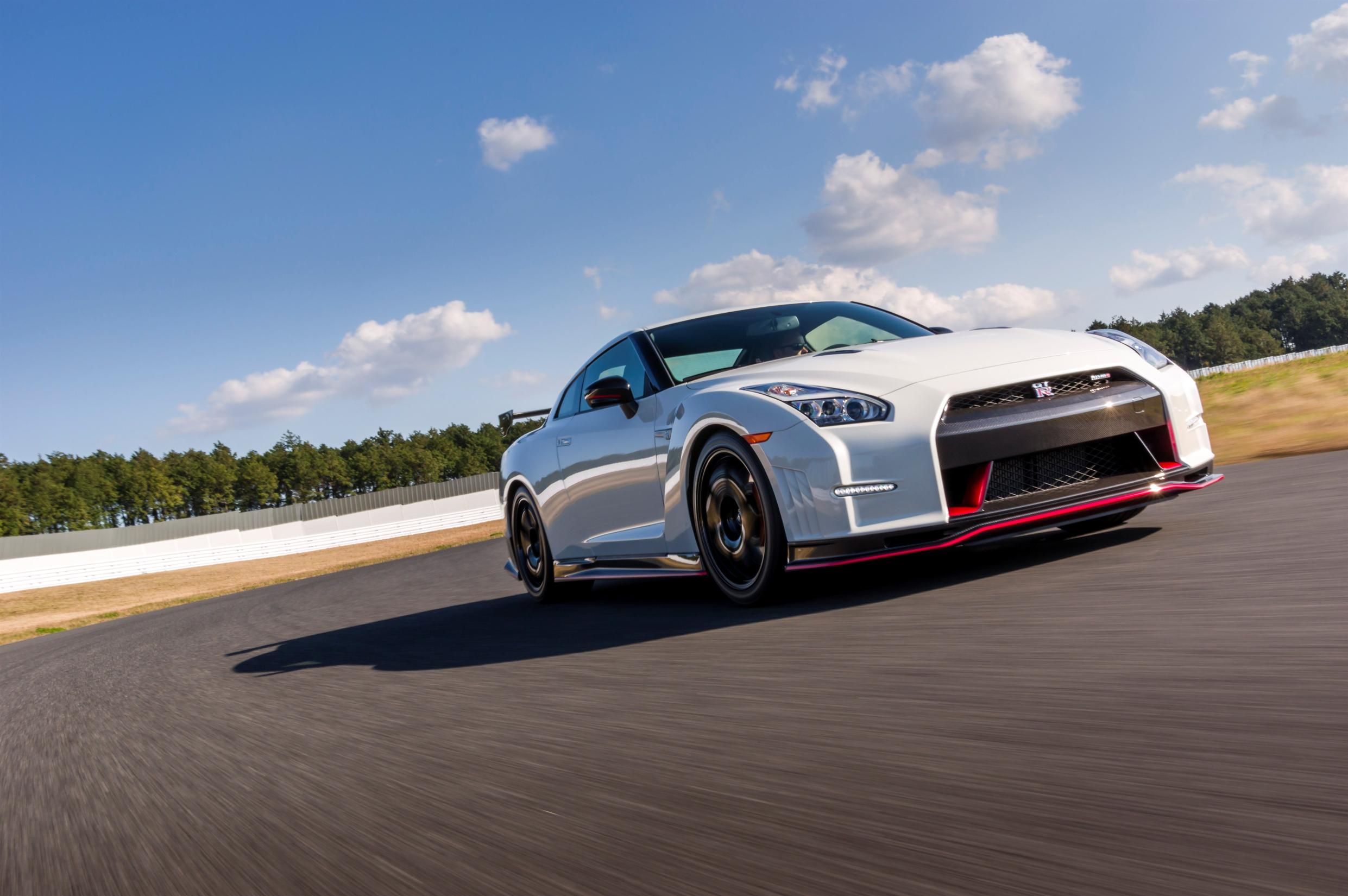
NISSAN GT-R NISMO AND NISSAN BLADEGLIDER CONCEPT MAKE EUROPEAN DEBUT IN GENEVA
Geneva, Switzerland, 4th March 2014: Two of the biggest attractions of the 2013 Tokyo Motor Show have made the trip to Geneva to make their European debuts today.
The thrilling GT-R Nismo is a thrilling race-inspired version of Nissan’s legendary supercar, delivering 600PS (441kw) from advanced 3.8-litre twin-turbocharged V6. Nissan latest member of the Nismo family employs innovation, uncompromising engineering and motorsports-inspired technologies to achieve new levels of power, speed and handling.
While the GT-R Nismo showcases some of Nissan’s most exciting innovations for today, the BladeGlider concept looks ahead to tomorrow’s performance car technology.
Nissan’s latest sports concept will challenge conventional thinking on sports car performance handling, braking and weight distribution. The Nissan BladeGlider features a radical front narrow track layout, where the front is significantly narrower than the rear, creating a swept-wing profile when seen from directly above.
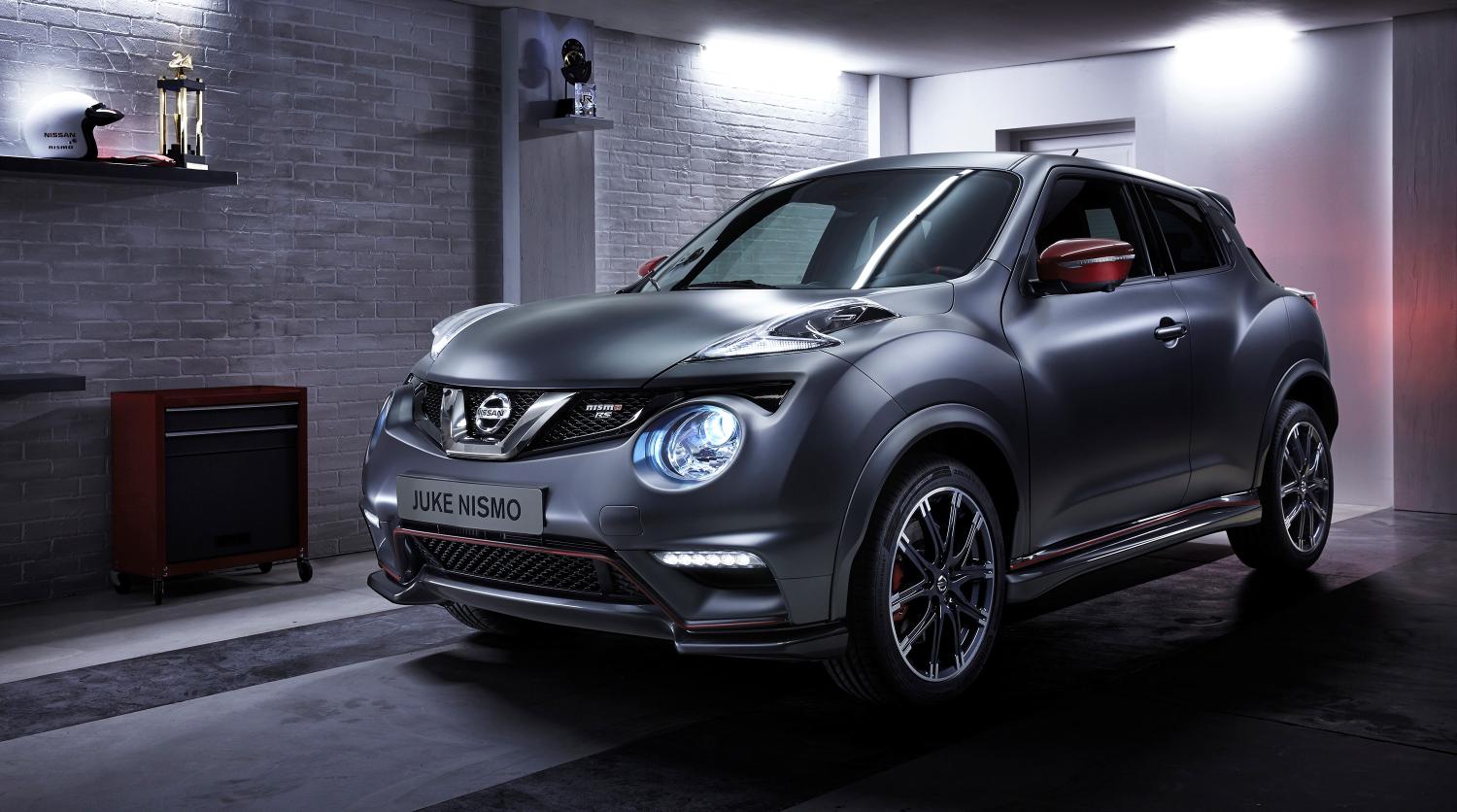
NEW NISSAN JUKE NISMO RS: EXTREME EXCITEMENT AS STANDARD
Nissan’s Nismo range expands with an even more focused version of the new Juke compact crossover
- Power rises by 18PS to 218PS
- Torque increases by 30Nm to 280Nm (manual)
- Ride and handling enhanced
- Strengthened body structure
- Sports brakes and large diameter muffler
- Mechanical Limited slip differential standard on 2WD models
- Design changes include new V-motion grille, RS badges and red brake callipers, plus the option of Recaro bucket seats
- Choice of six-speed manual or Paddle-shift Xtronic transmission with eight-speed manual mode
GENEVA, Switzerland (4th March, 2014) – The Nissan Nismo legend continues to grow with another new model for Europe.
As the flagship of the new Juke range, the Nismo RS is previewed at the 2014 Geneva Motor Show, hot in the wheel-tracks of the flagship Nissan GT-R Nismo.
With more power, a sharper chassis, stronger brakes and extra equipment, the new Nissan Juke Nismo RS builds on the existing and hugely popular Nissan Juke Nismo to create a more extreme version of the top selling compact crossover.
Like every Nismo model, the RS is infused with motorsport inspired design, aerodynamics and engineering to deliver thrilling performance and handling in a road car.
“With Nissan Juke Nismo already accounting for three per cent of all Juke sales in Europe, the enthusiasts’ desire for more performance is clearly there. The new Nismo RS version offers just that and cements Nismo’s reputation as creators of digital age performance,” said Guillaume Cartier, Senior Vice President, Sales and Marketing for Nissan in Europe
Benefiting from Nismo’s extensive global motorsport experience, the Nismo RS’s advanced 1.6-litre DIG-T engine has been fine-tuned to boost power to 218PS (160kW) from 200PS (147kW) while torque in two-wheel drive/manual transmission versions is increased from an already healthy 250Nm to 280Nm. To ensure the chassis can successfully transfer the extra torque to the road, 2WD models also benefit from the addition of a mechanical Limited Slip Differential on the driven front wheels.
An LSD is not required in four-wheel drive versions which have Torque Vectoring, Nissan’s Xtronic transmission and 250Nm of torque. Xtronic transmission models now feature standard fit steering wheel-mounted paddle shifts to control the eight-speed manual mode.
The performance gains are matched by an improved soundtrack with a retuned exhaust system providing a sportier engine note thanks to a large diameter muffler.
Other improvements linked to the increased engine performance include strategic body strengthening to increase torsional stiffness still further, while the brakes have been enhanced for even better resistance to fade under repeated hard use – front disk size has increased from 296mm to 320mm, while the rear discs are now ventilated. Revised spring and damper settings complete the chassis changes.
The Juke Nismo RS is set apart with red brake callipers and discreet ‘RS’ badging on the front and rear. Inside, the RS logo appears in the rev counter while a distinctive suede wrap covers the instrument binnacle. The final finishing touch inside is an unusual water print finish on the shift knob/paddle shifters and the central cluster.
Options on the RS version include special Recaro sports “bucket” seats, Xenon headlamps, Nissan’s Around View Monitor and Safety Shield which includes Lane Departure Warning, Blind Spot Warning and Moving Object Detection giving visual and audible warnings to avoid potential collisions.
New Juke Nismo RS is available in a choice of three exterior colours – White Pearl, Black Metallic or Silver Grey – with a single bespoke interior treatment: the predominantly black Nismo cabin.
The Nismo RS’s aerodynamic exterior has lower front and rear bumpers, wider wings and sill side skirts, plus a dark chrome V-motion grille – complete with Nissan’s new brand signature – and tailgate spoiler to better control airflow. Developed using experience gained on the racetrack, the aerodynamic upgrades reduce front and rear lift without increasing drag.
Nismo exterior design cues include red door mirror caps and a red pinstripe that encircles the bottom of the car. The picture is completed with new LED daytime running lights set within the lower air intake grilles at the front of the car, while eye-catching 18-inch alloy wheels accentuate the new Juke’s bold stance.
The Nismo treatment continues inside with a performance-oriented steering wheel, pedals, gauges, gear knob and door trims. Special suede-trimmed Nismo sports seats with red stitching provide extra support and comfort during cornering.
The Nismo RS also benefit from a number of further changes introduced across the entire new Juke range. The most obvious external changes include redesigned upper lamps, revised ‘boomerang’ tail lamps and door mirrors which incorporate LED side turn strip repeaters.
Despite its performance potential, the Juke Nismo remains highly practical. 2WD versions now benefit from a 40 per cent increase in carrying capacity, for example, thanks to subtle reshaping of the luggage area, while a two-stage floor and fold flat rear seats make the space even more flexible.
“New Juke Nismo RS conforms exactly to the Nismo ethos, providing an instant performance feeling in a premium design inspired by our motorsport activities. The result is engaging, exciting and accessible,” said Guillaume Cartier, Senior Vice President, Sales and Marketing for Nissan in Europe.
Further details of the new Juke Nismo RS will be revealed later in the year.
